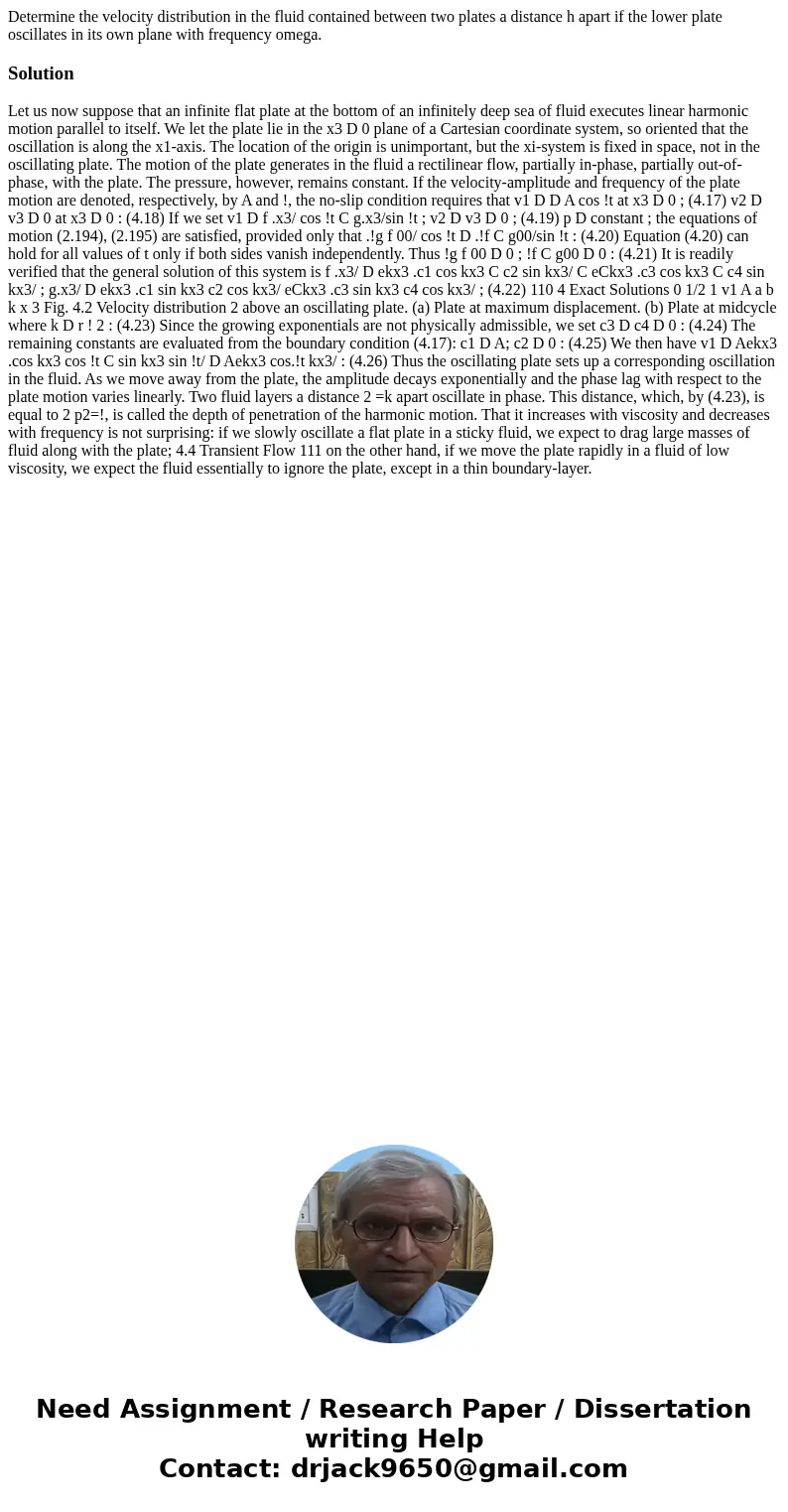Determine the velocity distribution in the fluid contained b
Solution
Let us now suppose that an infinite flat plate at the bottom of an infinitely deep sea of fluid executes linear harmonic motion parallel to itself. We let the plate lie in the x3 D 0 plane of a Cartesian coordinate system, so oriented that the oscillation is along the x1-axis. The location of the origin is unimportant, but the xi-system is fixed in space, not in the oscillating plate. The motion of the plate generates in the fluid a rectilinear flow, partially in-phase, partially out-of-phase, with the plate. The pressure, however, remains constant. If the velocity-amplitude and frequency of the plate motion are denoted, respectively, by A and !, the no-slip condition requires that v1 D D A cos !t at x3 D 0 ; (4.17) v2 D v3 D 0 at x3 D 0 : (4.18) If we set v1 D f .x3/ cos !t C g.x3/sin !t ; v2 D v3 D 0 ; (4.19) p D constant ; the equations of motion (2.194), (2.195) are satisfied, provided only that .!g f 00/ cos !t D .!f C g00/sin !t : (4.20) Equation (4.20) can hold for all values of t only if both sides vanish independently. Thus !g f 00 D 0 ; !f C g00 D 0 : (4.21) It is readily verified that the general solution of this system is f .x3/ D ekx3 .c1 cos kx3 C c2 sin kx3/ C eCkx3 .c3 cos kx3 C c4 sin kx3/ ; g.x3/ D ekx3 .c1 sin kx3 c2 cos kx3/ eCkx3 .c3 sin kx3 c4 cos kx3/ ; (4.22) 110 4 Exact Solutions 0 1/2 1 v1 A a b k x 3 Fig. 4.2 Velocity distribution 2 above an oscillating plate. (a) Plate at maximum displacement. (b) Plate at midcycle where k D r ! 2 : (4.23) Since the growing exponentials are not physically admissible, we set c3 D c4 D 0 : (4.24) The remaining constants are evaluated from the boundary condition (4.17): c1 D A; c2 D 0 : (4.25) We then have v1 D Aekx3 .cos kx3 cos !t C sin kx3 sin !t/ D Aekx3 cos.!t kx3/ : (4.26) Thus the oscillating plate sets up a corresponding oscillation in the fluid. As we move away from the plate, the amplitude decays exponentially and the phase lag with respect to the plate motion varies linearly. Two fluid layers a distance 2 =k apart oscillate in phase. This distance, which, by (4.23), is equal to 2 p2=!, is called the depth of penetration of the harmonic motion. That it increases with viscosity and decreases with frequency is not surprising: if we slowly oscillate a flat plate in a sticky fluid, we expect to drag large masses of fluid along with the plate; 4.4 Transient Flow 111 on the other hand, if we move the plate rapidly in a fluid of low viscosity, we expect the fluid essentially to ignore the plate, except in a thin boundary-layer.

 Homework Sourse
Homework Sourse